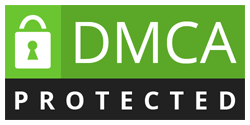Snellen Test: Chart, Results, Score, 20/60, 20/40, Eye Test, How to Do It
Content:
- What is Snellen Test?
- Snellen Chart
- Snellen Test Results
- Understanding 20/60 and 20/40 Scores
- How to Do the Snellen Eye Test
What is Snellen Test?
The Snellen Test is a widely used eye test that measures visual acuity, which is the sharpness or clarity of vision. This test is often conducted by optometrists and ophthalmologists to determine the level of a person's eyesight. It was developed by Dutch ophthalmologist Herman Snellen in 1862 and remains one of the most common methods for assessing visual impairment. The Snellen Test consists of a chart with letters arranged in rows, each row having progressively smaller letters as you move down the chart. The test measures how well a person can identify these letters at a distance, typically from 20 feet (6 meters). The results are expressed as a fraction, such as 20/20, which indicates normal vision, or 20/40, indicating that a person sees at 20 feet what a person with normal vision sees at 40 feet.

Snellen Chart
The Snellen Chart is the key tool used in the Snellen Test to assess visual acuity. It features a series of rows of capitalized letters, with the largest letters at the top and progressively smaller ones as you move down the chart. The chart is typically placed at a standard distance of 20 feet (6 meters) from the individual undergoing the test. Each letter on the chart is designed to test a specific level of clarity in vision, helping eye care professionals evaluate how well a person can see at a distance. The Snellen Chart may also include some numbers or symbols, but the primary focus remains on the letters. Some variations of the Snellen Chart, such as the tumbling E chart, use a different method of testing for those who may struggle with reading letters. The standard Snellen Chart remains the gold standard for assessing visual acuity in a clinical setting.
Snellen Test Results
The results of a Snellen Test are presented as a fraction, such as 20/20, 20/40, or 20/60, to indicate the level of a person’s visual acuity. The first number represents the testing distance, which is typically 20 feet in the United States or 6 meters in many other countries. The second number indicates the smallest line of letters that the individual can read correctly. For example, 20/20 is considered "normal" vision, meaning the individual can read at 20 feet what a person with perfect vision can also see from 20 feet. A result of 20/40 means the individual sees at 20 feet what a person with normal vision can see from 40 feet, suggesting some degree of vision impairment. Similarly, 20/60 indicates a further reduction in visual clarity. Lower fractions indicate worse visual acuity and may require corrective lenses or other treatments.
Understanding 20/60 and 20/40 Scores
Scores like 20/60 and 20/40 on the Snellen Test represent visual acuity measurements that are not quite perfect but still allow the individual to see objects and letters at a distance. A 20/40 score means that the person can see at 20 feet what a person with normal vision can see at 40 feet. This score is often the cutoff for passing the vision portion of a driver’s license test in many places. A 20/60 score indicates a more significant level of impairment, as the individual can only identify letters at 20 feet that someone with normal vision could recognize at 60 feet. A 20/60 score may indicate the need for corrective lenses or a follow-up examination by an eye care professional to determine the cause of the reduced visual acuity. The lower the second number in the fraction, the more significant the visual impairment. These results help doctors understand the severity of vision problems and determine the best course of action for correction.
How to Do the Snellen Eye Test
To perform the Snellen Eye Test, the person being tested should stand 20 feet (or 6 meters) away from the Snellen Chart in a well-lit room. If testing for a child or someone who cannot read, a modified chart may be used. The individual will cover one eye with an eye patch or their hand and will be asked to read aloud the smallest line of letters they can see clearly. This is done for each eye, one at a time. The eye care professional will note the smallest row of letters that the person can read correctly. It is important to ensure that the person is not guessing the letters but rather reading them based on their ability to clearly see them. In some cases, the test may need to be repeated with both eyes open to ensure the results are accurate. The Snellen Test is a simple yet effective way to determine if someone needs corrective lenses or further evaluation for eye conditions.
 Reviewed by Simon Albert
on
April 04, 2025
Rating:
Reviewed by Simon Albert
on
April 04, 2025
Rating:











